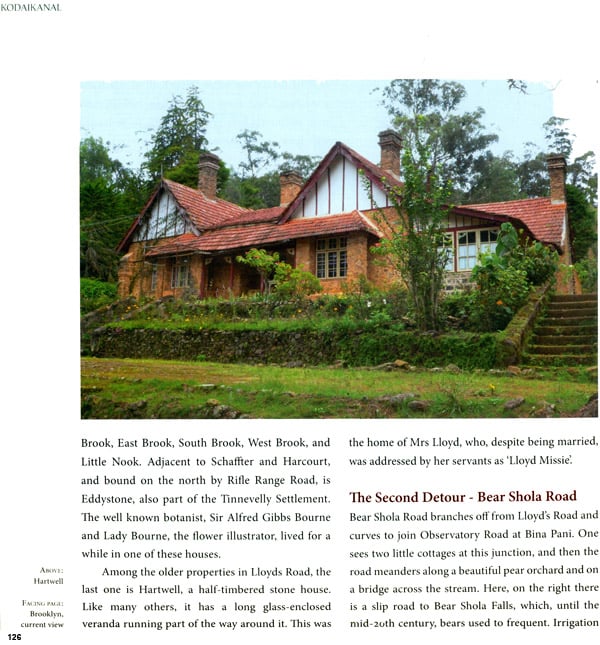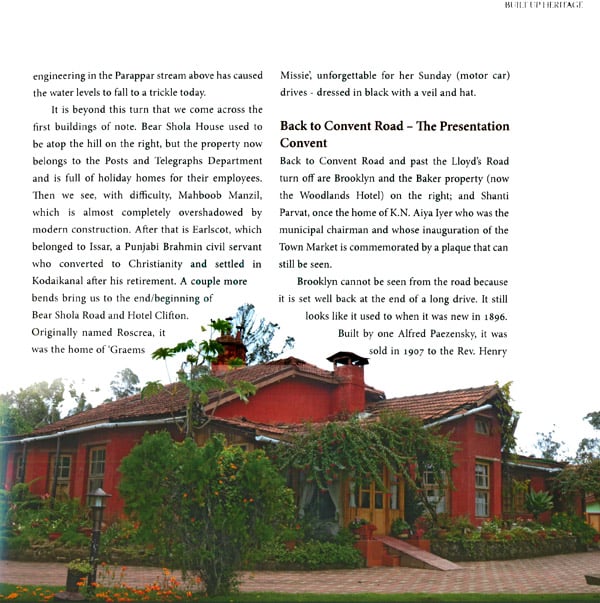
Kodaikanal (Vanishing Heritage of An Island in The Sky)
Book Specification
| Item Code: | NAK504 |
| Author: | Pradeep Chakravarthy |
| Publisher: | Trisha |
| Language: | English |
| Edition: | 2015 |
| ISBN: | 9789383098569 |
| Pages: | 240 (Throughout Color Illustrations) |
| Cover: | Hardcover |
| Other Details | 9.5 inch x 9.0 inch |
| Weight | 1 kg |
Book Description
About the Book
The Palni Hills, including Kodaikanal and the surrounding villages, is a very special part of the Western Ghats, with its own distinctive flora and bird life, especially in the upper plateau. The climate of the area is as effective a barrier to species' migration as the waters of the ocean are to an island. That is why we refer to these hills as an 'island in the sky'. The rare and precious natural heritage of this 'island' needs to be preserved and nurtured.
The Palni Hills receive the heaviest rainfall in southern Tamil Nadu. Water supplies from the Palnis are thus crucial for farmers down below, and we highlight the need to safeguard this vital catchment.
The heritage buildings in Kodaikanal have been built with local material-stone quarried from the hills, red clay from the mountains as mortar, and local wood. The ground- hugging elevations of the old buildings blend beautifully with the hill landscape, and carry the much needed message of a nature- friendly architecture.
The only way to preserve the heritage is to educate and sensitise residents and visitors to appreciate the delicate balance and understand the symbiotic nature of its existence-flora, fauna, and human. Only such an awareness will ensure that development efforts are environmentally suitable and sustainable.
The contributors, representing INTACH, Kodaikanal Chapter, hope that this book will contribute to enlightened management of this ecologically vulnerable and beautiful part of India.
The Kodaikanal Chapter of INTACH (Indian National Trust for Art and Cultural Heritage) was established in October 2008. INTACH aims to conserve and preserve India's natural, cultural, and tangible and non-tangible heritage. This book, covering all aspects of heritage of Kodaikanal, is the result of the research and hard work of volunteers who love Kodaikanal, both residents and non- residents. We want to record the unique heritage of this area before it is completely lost. The book has been structured in a way that it allows the reader to discover Kodaikanal and its environs by going on 'heritage walks' that cover the built-up and natural heritage of the town.
The Chapter has initiated the task of listing heritage buildings and also made detailed architectural drawings of a dozen important heritage structures in Kodaikanal.
As it is the youth of today who will be the future denizens of our town, the Chapter has initiated Heritage Clubs in 28 schools to create awareness of heritage amongst young people in the Palni Hills area. Heritage Club activities include classical Indian music and dance, and organising heritage competitions focusing on the local natural environment.
Foreword
Kodaikanal, once a 'happily-ever-after' town, is very unlikely to have the usual happy ending of fairy tales. It is rapidly being reduced to a shabbily built 'city' and losing its charm. The houses that the American missionaries and the British built were of local materials like granite, mud, limestone, and sandstone. Houses were mostly single storied. Great emphasis was laid on creating gardens with trees and flowering plants. They had sloping roofs made of galvanised iron or tin sheets and topped with tiles. Construction followed the gentle slopes of the mountains.
This style of architecture continued until the early 1990S, even though construction materials had changed. The art of building mud houses suffered a silent death with the onslaught of cement technology. Then came flat-topped, multi-storied buildings. With no zoning laws in place, box- like houses and small hotels have mushroomed everywhere, especially along the streams which serve as easy and inexpensive sewage dumps.
Kodaikanal is a nature lovers' paradise. Winding roads take you through verdant sholas from which little streams flow-some silent, others with a gurgle. The songs of birds fill the air. Grasslands cover the tops of the hillsides and take on different hues and colours, depending on the time of the day. In the villages around Kodaikanal terraced farming is the norm.
Now these sholas, grasslands, and farms are being converted to construction sites, putting indigenous flora and fauna at the risk of extinction. Our waterways-the gushing streams, waterfalls and lakes-are frequented by tourists eager to see the marvels of nature. Unfortunately, however, these as well as the marshes are drying up or turning into carriers of sewage. The Lake is to Kodaikanal as the Taj Mahal is to Agra. It is where the tourists flock. Even this treasure has not been spared.
We, the members of INTACH's Kodaikanal Chapter, have decided to document what is still left of Kodaikanal. We have included heritage buildings; flora and fauna including birds, fish, and insects; and water bodies including streams, waterfalls, lakes, and marshes. Most of these are fast disappearing and this decade might well be the last opportunity to record the heritage.
We thank the owners of the private heritage buildings for their permission to include details of their properties, as well as the local government authorities. We would like to thank every contributor, and there are many, for their help in bringing out this book. My special thanks go to Kodaikanal International School. This institution has been exemplary in the conservation of old buildings and in creating awareness of Kodaikanal's natural heritage. My thanks are also due to the Principal for his support and for allowing INTACH unlimited access to properties and the archives. The INTACH Kodaikanal Chapter feels proud of its association with Kodaikanal. Through this book it seeks to inspire each resident and visitor to commit to preserve the beauty of this town and its environs for future generations.
The opinions expressed in this book are the contributors' own and not necessarily those of INTACH.
Contents
| Foreword | 11 |
| The Beginnings | 17 |
| Legends and Folklore of the Palni Hills | 21 |
| Early Inhabitants of Kodaikanal | 27 |
| Re-discovery and Development of Kodaikanal | 29 |
| Built-up Heritage | 37 |
| Natural Heritage | 161 |
| Ecological Restoration | 209 |
| People who Shaped Kodaikanal and the Palni Hills | 211 |
| Treks in the Palni Hills | 225 |
| Bibliography | 228 |
| List of Contributors | 229 |
| Photo Credits | 230 |
| Appendix | 231 |
| Index | 233 |







